You’ve bought a bunch of pomegranates on a sale, and now you’re wondering: how long do pomegranates last, and how should I store them?
Fortunately for you, pomegranates last quite a long time, and don’t have any special requirements for storage. And if that, arguably quite long, storage time isn’t enough for you, you can always freeze pomegranate seeds.
If you’d like to learn a bit more about any of these topics, read on.

How Long Do Pomegranates Last?
As I mentioned, pomegranates keep for quite a long time, so you should easily go through your supplies before the fruits spoil.
At 41°F (or 5°C), which is the standard temperature in a fridge, pomegranates can last for up to two months ([UOC]).
If you leave the fruits at around room temperature, that period shrinks to about a week and a half to two weeks.
How long your pomegranates will keep quality depends on how many days they sat in the supermarket before you’ve bought them. For best results, try not to leave them in storage until the very last moment.
When it comes to pomegranate seeds, they last for about 5 to 7 days.
Now that you know all about the storage periods, let’s talk about how to take care of pomegranates so that they last the longest.
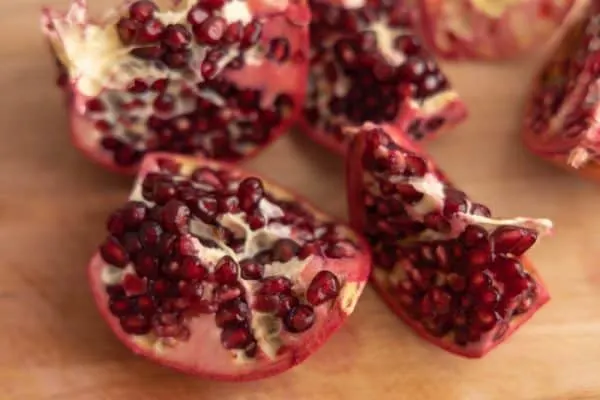
How To Store Pomegranates
Once again, let’s start with whole pomegranates.
If you leave them on the counter, make sure they don’t sit in sunlight. If that’s possible, move pomegranates to a place where it’s a bit colder, like the pantry. And make sure they can breathe, so there’s no moisture buildup that often leads to mold.
Remember that you can store pomegranates at room temp for only a week or two.
If you go with the best option, that is the fridge, there’s nothing special you need to do. Just put the unwrapped fruits in the refrigerator. That’s it.
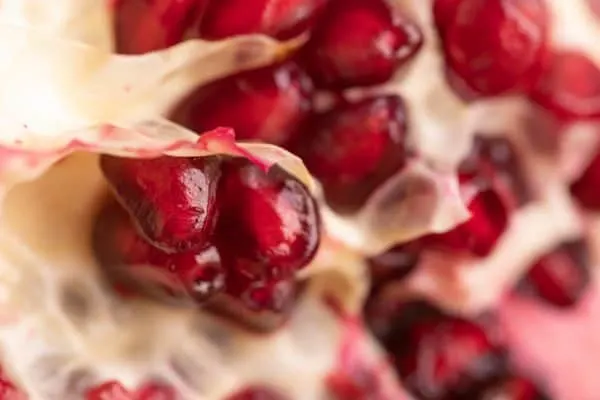
When it comes to pomegranate seeds, you need a storage container or a freezer bag. It’s best if you can seal that container, so the seeds don’t pick up any smells. Again, all you need to do is to put that container on a shelf in the fridge.
The last storage option that’s worth discussing is freezing.
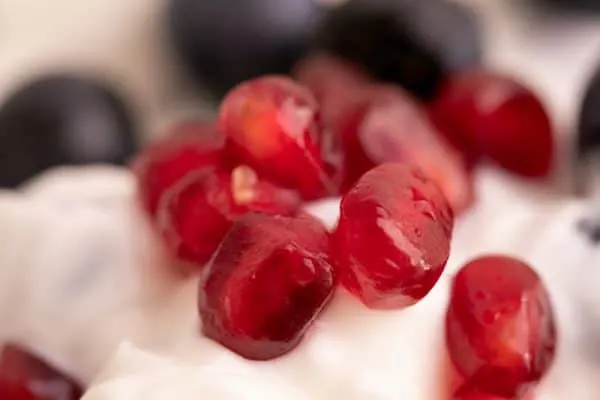
Can You Freeze Pomegranate Seeds?
While freezing a whole pomegranate isn’t a good idea, freezing the seeds is definitely an option. The seeds freeze well, and if you pre-freeze them (like I mention in the instructions below), you can easily grab a spoon or two whenever you need some.
Here’s how to freeze pomegranate seeds:
- Pat the seeds dry. If you’ve just removed the seeds from the pith, especially if you used the water bowl method that I use, there will be drops of water here and there. We don’t want them, so the first step is to pat the arils dry.
- Pre-freeze. Grab a cookie sheet and line it with a silicone mat (if you have one). Lay all the seeds on it in a single layer so that they hardy touch one another. Put the tray in the freezer until the seeds freeze.
- Transfer for long-term freezing. Move the frozen seeds into a container or a freezer bag, and seal it tightly. Label it if you like, and put it into the freezer for long-term storage.
The whole process shouldn’t take more than 10 to 15 minutes. Also, it allows you to grab as many seeds as you need, whenever you need them.
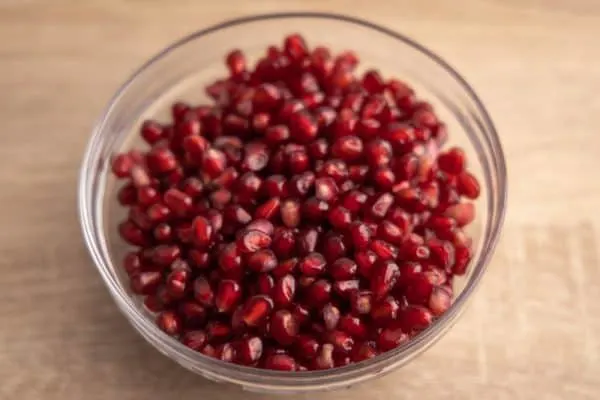
How To Tell If a Pomegranate Has Gone Bad?
Before we talk about pomegranates spoiling, let’s briefly mention ripeness.
First, you should know that pomegranates don’t ripen after being harvested ([UOC]). It’s not like with mangos or avocados, which you sometimes need to ripen first. Because of that, if your pomegranates aren’t ripe, they never will be.
You tell ripe from unripe pomegranates by shape. Unripe ones are round, like an apple, while ripe ones have their sides flattened (look at the photo from above that I did). Fortunately, 99 out of 100 cases the pomegranate you’ve bought in the supermarket will be ripe.
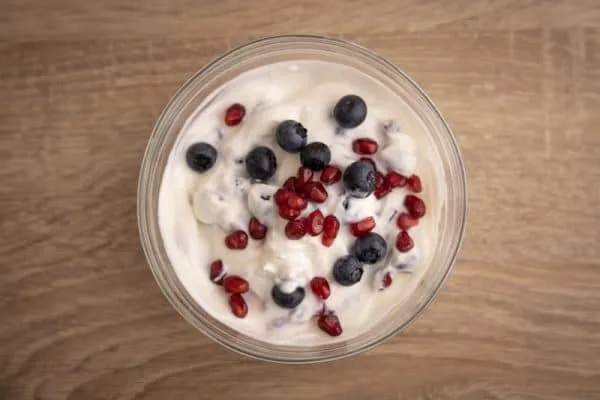
When it comes to signs that your pomegranate is bad, here are the most common ones:
- Brown or black arils. If most of the seeds are black or brown, discard the fruit. If there’s only a section of those, and the rest seems to be okay, feel free to throw out only the bad ones. You should know that the changed color of the arils might happen without any external symptoms ([UOC]).
- Soft or sunken spots, mushiness. These are caused either by losing water content or external damage. Either way, if the injured surface is small, the rest should be okay. If, on the other hand, the whole fruit is mushy, get rid of it.
- Light weight. If the pomegranate seems to be light for its size, or even feels hollow, throw it out.
- Mold. That’s a sure sign things have gone bad. Of course, if there’s only a small area covered with white fur, you can cut it out (and then some), and eat the rest if you wish. If your pomegranate seeds go moldy, discard the whole container.
- Something else is off. If anything about the pomegranate is not quite right, throw it out. Better safe than sorry.
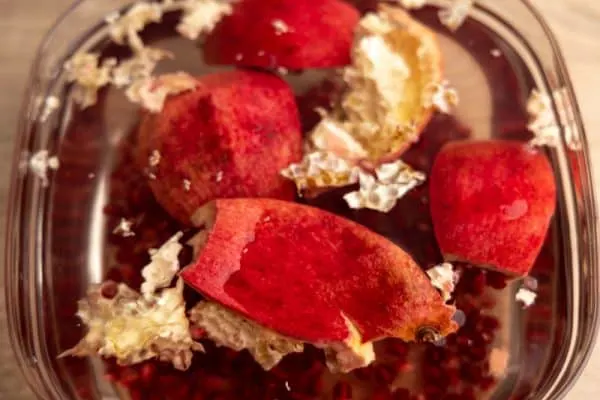
Summary
- Pomegranates last up to two months in the fridge and between a week and two weeks at room temperature
- Pomegranate seeds keep for 5 to 7 days in an airtight container in the refrigerator
- You can freeze pomegranate seeds if that week isn’t long enough
- Discard the fruit if it’s something wrong with the seeds, the whole thing is mushy or there’s mold